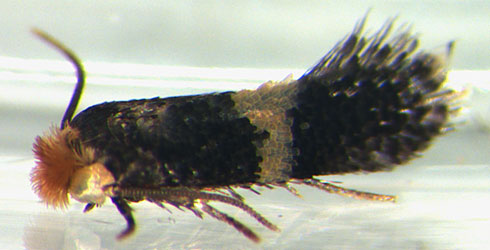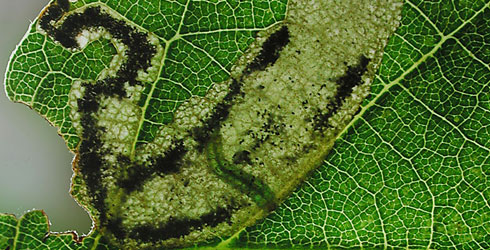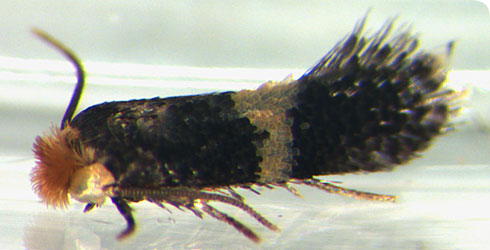Ectoedemia heckfordi
Ectoedemia heckfordi belongs to the family of moths called Nepticulidae.
It was discovered in 2004 in its caterpillar stage, in Hembury Woods, South Devon by Bob Heckford.
The species was named and described in early 2010 in Heckford’s honour by the Dutch entomologist Erik van Nieukerken and colleagues from the Czech Republic.
Bob Heckford presented specimens to the Museum and they reside here in the collections of the Entomology Department.
Finding a previously undescribed moth in Britain is rare, especially when the insect is as small as this pygmy moth.
Distribution
The species was found in April 2004 in the larval stage, in a small woodland in south Devon within the Dartmoor National Park. It was later also found around the nearby Bench Tor, but it has yet to be found outside of Britain.
Species detail
-

Taxonomy
Ectoedemia heckfordi has a series of ochre-coloured 'hairs' arising from a common point at the base of each hindwing - this is one of the characters that distinguishes it from its closely related species. Read more about this and other differences.
-

Biology
E. heckfordi larvae are leaf miners. Discover where you might find their mines, and how to recognise them.
Images

Watercolour of Ectoedemia heckfordi.
© Ales Laštůvka
Ectoedemia heckfordi - this tiny moth has a series of 'hairs' in a tight cluster, arising from a common point at the base of its hindwing. These 'hairs' are actually modified scales.
© Dr Erik J van Nieukerken
Ectoedemia heckfordi leaf mines make a characteristic pattern on host plant leaves.
© Ian ThirlwellAuthor
Malcolm Scoble
Former Keeper of Entomology
A word from the author
"I did my PhD on this family of moths (the Nepticulidae) and grew up in the area where it was found. Finding an undescribed moth in Britain is a rare event, even when the insect is as small as this pygmy moth. There was a great deal of press coverage of this species."
